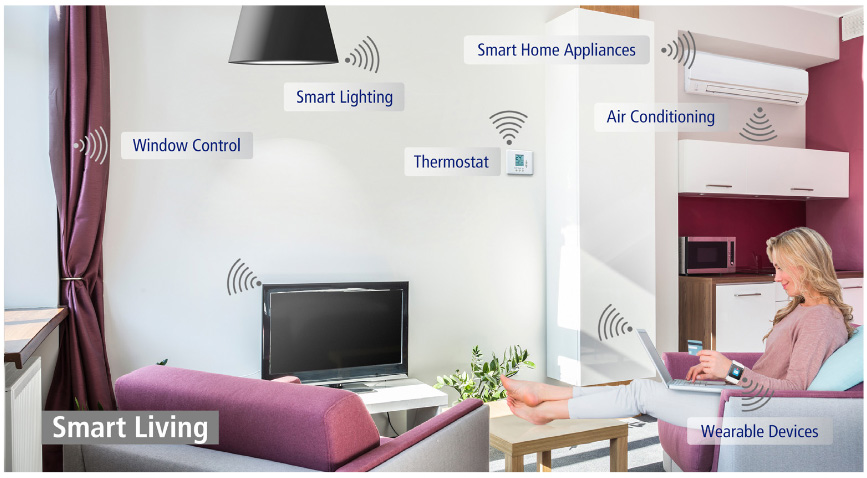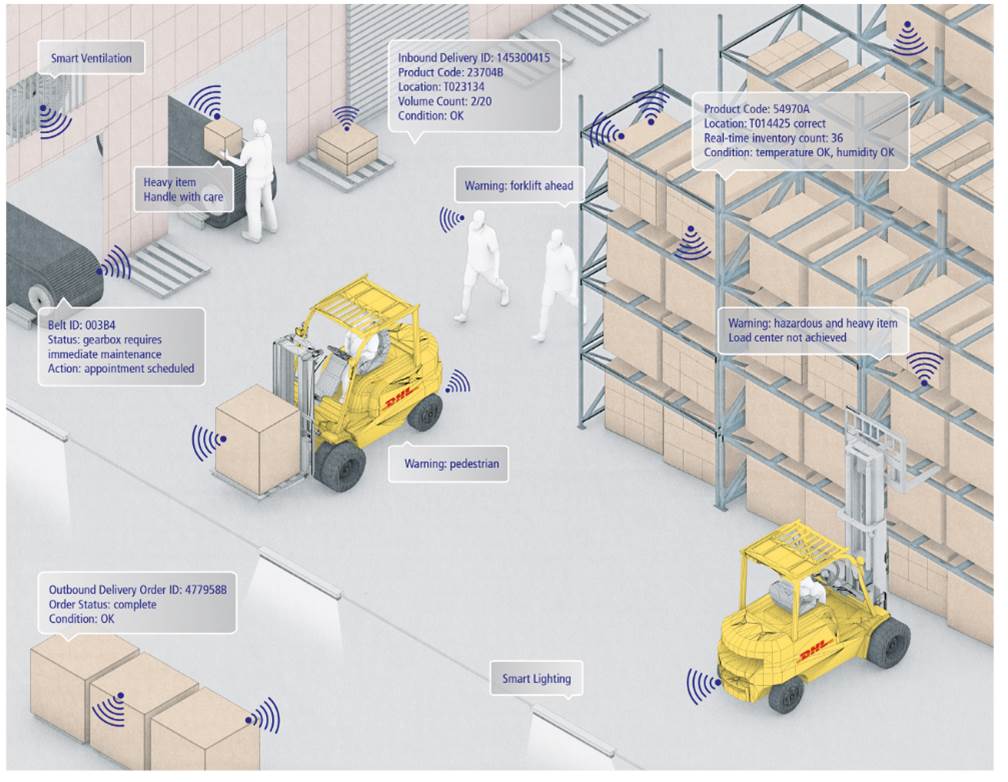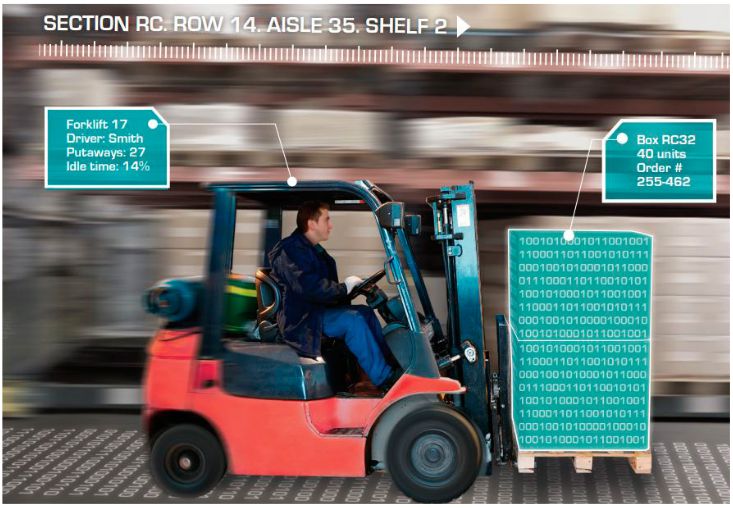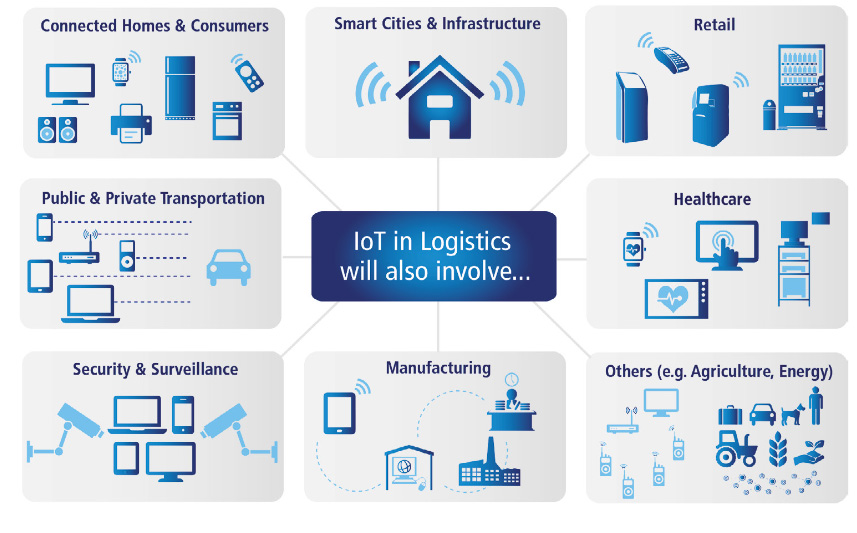It is difficult to overestimate the benefits of IoT technologies for the logistics sector, since it is here that a huge increase in efficiency can be achieved: solutions can be applied in warehouses, in transport and loading processes, and for delivering goods directly to customers at the “last mile” level.
Thanks to the technology of the Internet of things, companies manage to combine warehouses, transport and millions of units of goods into a single self-governing intellectual system. Most often today, IoT devices are used in warehouses.
Receiving information about tangible assets throughout the supply chain, IoT systems then independently process and analyze the data, as well as ensure that orders are stored correctly and as quickly as possible fall into the hands of end customers.
Technologies
- Warehouse Management Systems (WMS)
- Warehouse Control Systems (WCS)
- Building Automation Systems (BAS)
- Sensors on the warehouse equipment, vehicles.
- Industrial robots for the selection and packaging of goods in stock.
- Drones.
- Postamats.
- Miniprinter for label printing.
- Interactive interfaces.
Areas of use
Improving the efficiency of equipment in stock. Thanks to the sensors on the conveyor belts and loaders, you can determine the optimal speed, load, throughput.
Smart inventory. The system takes readings from the sensors and sensors located on the goods in the warehouse in an interactive mode, forming reports on their quantity, condition and location. Flying drones equipped with cameras can do more than 30 frames per second. Looking around the warehouse with the "eyes" of a drone, you can inventory a large room in just one day, even if it used to take a month to complete all similar work.
Monitoring the integrity of the goods and packaging. Equipment for premises with goods of special categories that require specific storage conditions, can independently monitor the temperature, lighting, and air humidity.
Monitoring the quality of service. Control of the delivery of goods to customers, accurate shipment, correct sorting of goods. Customer loyalty to logistics operators grows if they provide a service for tracking the location of cargo.
Transport management. The data coming from the connected vehicle fleet can be analyzed to make forecasts, which, among other things, will help to automatically organize preventive work, regulate the load and prevent accidents. Read more about transport management systems here.
According to Cisco estimates, already in four years about 50 billion devices worldwide will be connected to the Internet and only 17% of them will be computers and mobile gadgets. The remaining 83% will comprise smart home systems, wearable gadgets and IoT devices. Experts say that in the next 10 years, the Internet of things will generate about $ 8 trillion in revenue, and $ 1.9 trillion will provide optimization of the supply chain and logistics. Thus, this area is one of the highest priorities for development.

The Internet of Things is not just connecting physical objects to the World Wide Web, but the ability to get valuable data from a wide variety of devices. According to Cisco Vice President Edzard Overbeek, by analyzing the digital information received, you can increase productivity and conduct an effective transformation of business processes.
How IoT influences logistics
The introduction of the Internet of Things technology in the field of logistics allows you to optimize the entire system, including warehouse operations, transportation and delivery. IoT makes it possible to increase process efficiency, security and quality of service, this is why IoT are among TOP-10 technologies, which will challenge logistics in 2019. Analytics can be used for the entire value chain, so that everyone benefits from the introduction of new technologies: logisticians, their partners and end users.
IoT technologies allow you to:
- monitor all processes in real time;
- determine the performance of people and make adjustments in the course of work to improve it;
- automate the process and reduce the amount of manual work;
- optimize the process of joint work of people, systems and assets;
- implement a more effective innovative approach based on the data obtained;
- improve service quality and minimize risks in case of unforeseen circumstances.

Special sensors can monitor production assets within the supply chain. It is they who collect large data arrays, which are subsequently processed by the system.
At the moment, the most favorable circumstances are emerging for transforming the logistics industry at the expense of the Internet of Things: the rapid development of the mobile application market, the introduction of user devices into the corporate IT system, the emergence of 5G networks, the development of effective solutions for working with Big Data, etc. In addition, Today, customers are increasingly demanding innovative approaches, which also contributes to a faster process of deploying IoT technologies in logistics.
To understand how effective the Internet of things is, you can consider how its solutions are used in other industries. In each case, the introduction of IoT technologies gives the user a lot of advantages, including:
- achieving operational efficiency and cost reduction;
- ensuring security and reliable security;
- increasing the efficiency of customer service experience;
- implementation of successful business models.
The Internet of Things: Transport Monitoring and Traffic
The scope of transportation is considered one of the highest priority for the implementation of IoT solutions. Today, huge amounts of money are invested in the development of technologies of connected cars, due to which the number of accidents decreases, environmental indicators improve and the comfort of trips increases. In addition, the use of the Internet of Things leads to increased efficiency in traffic control.
To manage it, data from streets, vehicles, traffic sensors, surveillance cameras, user reports, etc. are used. Thanks to this, the system allows you to adjust the correct timetable for public transport, reduce traffic and increase the loyalty of citizens by improving the quality of services provided. All that becomes significant in ground delivery of cargoes.
The implementation of IoT solutions makes it possible to coordinate traffic, allocate parking spaces, etc. Such a system of transport monitoring makes it possible not only to improve the transport infrastructure, but also to create all the necessary prerequisites for its growth.
IoT and security
Enhancing security and safety is one of the most important aspects of the Internet of Things. For example, Union Pacific, the largest railway company, uses innovative technologies to prevent equipment failure and minimize the risk of train derailment. Specialists simply placed sensors on the tracks that monitor the integrity of the wheels, and due to this they were able to predict and avoid various unpleasant incidents, each of which could cost the company about $ 40 million. That makes huge sense on railway delivery in general.
In addition, IoT technologies ensure employee safety. Under difficult working conditions at a construction site or in a mine, a company can locate sensors at all sites, monitor the state of equipment, monitor workers' movements, monitor many operations and thereby significantly increase occupational safety and increase their own profits.

Experts believe that logistics will be one of the main industries that will benefit most from the development of IoT technologies. The Internet of Things provides the ability to connect assets across the supply chain, analyze data and implement new, more efficient service models. In addition, the fall in prices for high-tech equipment and the emergence of high-speed Internet allows logistics services to be even more profitable for companies and their customers.
The use of IoT in logistics
Many technologies of the Internet of Things have penetrated into the sphere of logistics for quite some time, allowing to increase the productivity of delivery, ensure the integrity of cargo and their storage. However, this is only a small part of the IoT capabilities.
There are quite a few examples of the use of modern technologies of the Internet of Things in logistics. In particular, IoT allows you to create a high-speed and high-tech environment in warehouses, thanks to which every square meter of warehouse is efficiently used, and the processing and delivery of incoming cargo is almost instantaneous. It is possible to optimize using the Internet of Things absolutely all equipment and infrastructure of a building, including shadow assets.

Representatives of the German project Alethia have developed a wireless network system that, using sensors located on pallets and various objects, allows real-time monitoring of the location of goods, ensuring security of delivery, tracking temperature, humidity and other indicators so that goods are delivered safely.
IoT solutions can increase safety at times in a warehouse by eliminating collisions between forklifts and pedestrians, injury from falling pallets, etc. Not only workplaces and equipment can be connected, but also employees themselves. Sensors can monitor their well-being, check how tired the trucker is and whether the employee needs rest. The system can also be used to optimize workflow to make it simpler and more efficient.
IoT technologies are widely used in the transport of goods, as sensors allow you to monitor and control a container, which can even be located in the middle of the Pacific Ocean. Thanks to IoT solutions, cases of theft of goods will become extremely rare, and logistics companies will be able to be sure that the goods were delivered to the right place on time and of good quality.
Success factors of IoT in logistics
To get the most out of the benefits of implementing IoT technologies, it is important to create a single network of smart assets linked across the supply chain. To achieve this goal will allow certain factors:
- the use of unique identifiers for a variety of assets;
- ensuring data exchange between sensors in heterogeneous systems;
- ensuring confidentiality and establishing trust relationships;
- the transformation of business processes according to the decisions of the Internet of Things;
- focus on creating an IoT reference architecture.
This is the only way to optimize everything, even automated processes, and unlock the full potential of the Internet of Things in the field of logistics. Stay informed about new discoveries of IoT in logistics in our feed as well as join discussion in our digital logistics chat! Think about mass or custom solutions in IoT for your Company? Send us a request to [email protected] and let us make an outstanding offer!

